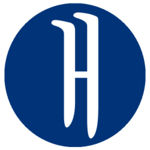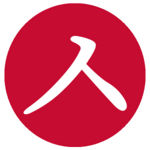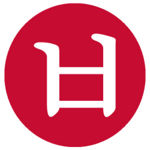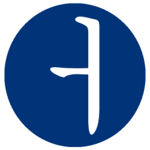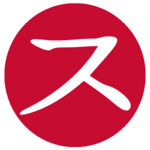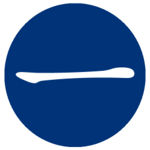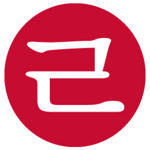Difference between revisions of "Hangeul step 3"
(Corrected the long-standing myth that ㅔ = bed. For 90% of English speakers, it is closer to the e in hey. Only Aussies and Kiwis pronounce bed with an ㅔ (and bad with ㅐ). The ㅐ sound is not like "air" at all. Air is a dipthong.) |
DigitalSoju (Talk | contribs) |
||
| (5 intermediate revisions by one user not shown) | |||
| Line 7: | Line 7: | ||
|} | |} | ||
| + | |||
| + | ==Step 3== | ||
In this lesson, you will learn: | In this lesson, you will learn: | ||
*Consonants: [[ㅅ]], [[ㅂ]], [[ㅈ]], [[ㄹ]] | *Consonants: [[ㅅ]], [[ㅂ]], [[ㅈ]], [[ㄹ]] | ||
*Vowels: [[ㅐ]], [[ㅔ]], [[ㅓ]], [[ㅡ]] | *Vowels: [[ㅐ]], [[ㅔ]], [[ㅓ]], [[ㅡ]] | ||
| + | {{-}} | ||
{{Hangeul intro table | {{Hangeul intro table | ||
|bgcolor = {{kred}} | |bgcolor = {{kred}} | ||
|Consonant = ㅅ | |Consonant = ㅅ | ||
|Cons image = ㅅ.jpg | |Cons image = ㅅ.jpg | ||
| − | |Cons text = This is | + | |Cons text = This is an "s" sound. It can be aspirated or unaspirated. When combined with the vowel [[ㅣ]], [[ㅑ]], [[ㅒ]], [[ㅕ]], [[ㅖ]], [[ㅛ]] or [[ㅠ]], it is pronounced with an "sh" sound. You can also bunch up your tongue like you are forming the "y" in "yodel." (For Mandarin speakers, this is like the "x" in "xin" in Hanyu Pinyin.) For full information about this letter, see [[ㅅ]]. |
|Vowel = ㅐ | |Vowel = ㅐ | ||
|Vowel image = ㅐ.jpg | |Vowel image = ㅐ.jpg | ||
| Line 38: | Line 41: | ||
|Consonant = ㅂ | |Consonant = ㅂ | ||
|Cons image = ㅂ.jpg | |Cons image = ㅂ.jpg | ||
| − | |Cons text = This is pronounced like | + | |Cons text = This is pronounced like the "p" in trap. It is ''un''aspirated like a b, but voice''less'' like a p. However, when found between vowels the sound is voiced and makes a /b/ sound. For full information about this letter, see [[ㅂ]]. |
|Vowel = ㅔ | |Vowel = ㅔ | ||
|Vowel image = ㅔ.jpg | |Vowel image = ㅔ.jpg | ||
| − | |Vowel text = This sound used to sound different from ㅐ. The sound is not reliably distinguished anymore, but the vowel length can be shorter than ㅐ. For North Americans and Brits, this is | + | |Vowel text = This sound used to sound different from ㅐ. The sound is not reliably distinguished anymore, but the vowel length can be shorter in length than ㅐ and a little more tense, too. For North Americans and Brits, this is like the "a" in face, but clipped. Most speakers combine an "eh" and an "ee" together. Just use the first part. For Australians and New Zealanders, this is the "e" in dress. For full information about this letter, see [[ㅔ]]. |
|Vowel audio description1 = Young Male | |Vowel audio description1 = Young Male | ||
|Vowel audio1 = <flashmp3>e H.mp3|leftbg=003478|rightbg=c60c30|lefticon=ffffff|righticon=ffffff</flashmp3> | |Vowel audio1 = <flashmp3>e H.mp3|leftbg=003478|rightbg=c60c30|lefticon=ffffff|righticon=ffffff</flashmp3> | ||
| Line 69: | Line 72: | ||
|Consonant = ㅈ | |Consonant = ㅈ | ||
|Cons image = ㅈ.jpg | |Cons image = ㅈ.jpg | ||
| − | |Cons text = This is pronounced like | + | |Cons text = This is pronounced like the "ch" at the end of "match." It is not aspirated like the "ch" in "cheek," but between vowels, it is voiced like the "dg" in "badger." For full information about this letter, see [[ㅈ]]. |
|Vowel = ㅓ | |Vowel = ㅓ | ||
|Vowel image = ㅓ.jpg | |Vowel image = ㅓ.jpg | ||
| − | |Vowel text = There is no exact sound from English to which ㅓ may be compared. Its sound is somewhere between an "uh" sound and the 오 sound you previously learned. Listen to the audio file carefully! For full information about this letter, see [[ㅓ]]. | + | |Vowel text = There is no exact sound from English to which ㅓ may be compared. Its sound is somewhere between an "uh" sound and the 오 sound you previously learned. In some dialects it is like the sound in <caught>. Try to keep it unrounded or loosely rounded. Listen to the audio file carefully! IPA symbol: /ʌ/. For full information about this letter, see [[ㅓ]]. |
|Vowel audio description1 = Young Male | |Vowel audio description1 = Young Male | ||
|Vowel audio1 = <flashmp3>eo H.mp3|leftbg=003478|rightbg=c60c30|lefticon=ffffff|righticon=ffffff</flashmp3> | |Vowel audio1 = <flashmp3>eo H.mp3|leftbg=003478|rightbg=c60c30|lefticon=ffffff|righticon=ffffff</flashmp3> | ||
| Line 105: | Line 108: | ||
|Consonant = ㄹ | |Consonant = ㄹ | ||
|Cons image = ㄹ.jpg | |Cons image = ㄹ.jpg | ||
| − | |Cons text = This sound is capable of making both an R and an L sound. | + | |Cons text = This sound is capable of making both an R and an L sound. Native Korean words never begin with ㄹ, so expect to hear "l" or a flap "r" or even an "n." At the end of words and before consonants, it is an "l." When repeated it is an "l" held for a longer amount of time. Between vowels it is a "flap r." Do note that this is not exactly the English "r," which is usually [ɹ~ɻ]. This is a [[wikipedia:flap r|flap R]], [ɾ], like the "d" in "rider" or the "t" in "writer" as spoken by Australians and North Americans. It is identical to the "r" in the older Scottish accent and in older Received Pronunciation it was the "r" between vowels. Americans once mocked the Brits as being "veddy British" because their "r" in "very" was like the American "d" in "Teddy." For Spanish speakers, it is similar to the lone "r" in "caro." For full information about this letter, see [[ㄹ]]. |
|Vowel = ㅡ | |Vowel = ㅡ | ||
|Vowel image = ㅡ.jpg | |Vowel image = ㅡ.jpg | ||
| − | |Vowel text = There is no exact sound to which ㅡ may be compared in English, so listen to the audio file carefully. For full information about this letter, see [[ㅡ]]. | + | |Vowel text = There is no exact sound to which ㅡ may be compared in English, so listen to the audio file carefully. Make your mouth say the "u" in "flute" or the "oo" in "goose," but do not round your lips. This is close to what you want. For full information about this letter, see [[ㅡ]]. |
|Vowel audio description1 = Young Male | |Vowel audio description1 = Young Male | ||
|Vowel audio1 = <flashmp3>eu H.mp3|leftbg=003478|rightbg=c60c30|lefticon=ffffff|righticon=ffffff</flashmp3> | |Vowel audio1 = <flashmp3>eu H.mp3|leftbg=003478|rightbg=c60c30|lefticon=ffffff|righticon=ffffff</flashmp3> | ||
Latest revision as of 02:41, 27 December 2018
|
|
|
| Help · Cheat Sheet · Community portal |

|

|
Contents
Step 3
In this lesson, you will learn:
|
| ||||||||||
|
For North Americans and Brits, this the "e" in dress. For Australians and New Zealanders, this is the "a" in trap. For full information about this letter, see ㅐ.
|
This is an "s" sound. It can be aspirated or unaspirated. When combined with the vowel ㅣ, ㅑ, ㅒ, ㅕ, ㅖ, ㅛ or ㅠ, it is pronounced with an "sh" sound. You can also bunch up your tongue like you are forming the "y" in "yodel." (For Mandarin speakers, this is like the "x" in "xin" in Hanyu Pinyin.) For full information about this letter, see ㅅ. | ||||||||||
| Practice | |
|---|---|
| 새 | |
|
| ||||||||||
|
This sound used to sound different from ㅐ. The sound is not reliably distinguished anymore, but the vowel length can be shorter in length than ㅐ and a little more tense, too. For North Americans and Brits, this is like the "a" in face, but clipped. Most speakers combine an "eh" and an "ee" together. Just use the first part. For Australians and New Zealanders, this is the "e" in dress. For full information about this letter, see ㅔ.
|
This is pronounced like the "p" in trap. It is unaspirated like a b, but voiceless like a p. However, when found between vowels the sound is voiced and makes a /b/ sound. For full information about this letter, see ㅂ. | ||||||||||
| Practice | |
|---|---|
| 베 | |
| 배 | |
| 세 | |
|
| ||||||||||
|
There is no exact sound from English to which ㅓ may be compared. Its sound is somewhere between an "uh" sound and the 오 sound you previously learned. In some dialects it is like the sound in <caught>. Try to keep it unrounded or loosely rounded. Listen to the audio file carefully! IPA symbol: /ʌ/. For full information about this letter, see ㅓ.
|
This is pronounced like the "ch" at the end of "match." It is not aspirated like the "ch" in "cheek," but between vowels, it is voiced like the "dg" in "badger." For full information about this letter, see ㅈ. | ||||||||||
| Practice | |
|---|---|
| 저 | |
| 재 | |
| 제 | |
| 서 | |
| 버 | |
|
| ||||||||||
|
There is no exact sound to which ㅡ may be compared in English, so listen to the audio file carefully. Make your mouth say the "u" in "flute" or the "oo" in "goose," but do not round your lips. This is close to what you want. For full information about this letter, see ㅡ.
|
This sound is capable of making both an R and an L sound. Native Korean words never begin with ㄹ, so expect to hear "l" or a flap "r" or even an "n." At the end of words and before consonants, it is an "l." When repeated it is an "l" held for a longer amount of time. Between vowels it is a "flap r." Do note that this is not exactly the English "r," which is usually [ɹ~ɻ]. This is a flap R, [ɾ], like the "d" in "rider" or the "t" in "writer" as spoken by Australians and North Americans. It is identical to the "r" in the older Scottish accent and in older Received Pronunciation it was the "r" between vowels. Americans once mocked the Brits as being "veddy British" because their "r" in "very" was like the American "d" in "Teddy." For Spanish speakers, it is similar to the lone "r" in "caro." For full information about this letter, see ㄹ. | ||||||||||
| Practice | |
|---|---|
| 르 | |
| 래 | |
| 레 | |
| 러 | |
| 스 | |
| 브 | |
| 즈 | |
Real Examples
Practice with these real Korean words. The examples for step 4 have been split. Half of the examples for step 4 are here and half are on the next page.
| Word | Audio |
|---|---|
| 가게 (store) | |
| 가로 (the width) | |
| 가로수 (trees lining a street) | |
| 가르마 (a part in one´s hair) | |
| 가사 (the words of a song) | |
| 가수 (singer) | |
| 가스 (gas) | |
| 가루 (powder) | |
| 개 (dog) | |
| 개미 (ant) | |
| 거기 (there) | |
| 거리 (street,distance) | |
| 게 (crab) | |
| 기내 (the inside of a plane) | |
| 기다리다 (to wait) | |
| 고래 (whale) | |
| 구조 (rescue) | |
| 나라 (country) | |
| 나르다 (to carry) | |
| 나이 (age) | |
| 나사 (screw) | |
| 나비 (butterfly) | |
| 내리다 (to go descend) | |
| 네 (yes) | |
| 내 (my) | |
| 네모 (square) | |
| 너구리 (raccoon) | |
| 노루 (roe deer) | |
| 노래 (song) | |
| 다리 (leg, bridge) | |
| 다시 (again) | |
| 대구 (Daegu, the name of a Korean city) | |
| 데우다 (to reheat, to heat up) | |
| 도마 (chopping board) | |
| 도시 (city) | |
| 두부 (soybean curd,tobu) | |
| 드디어 (finally) | |
| 드라마 (drama) | |
| 라디오 (radio) | |
| 러시아 (Russia) | |
| 마루 (wooden floor) | |
| 마리 (counter used for counting the number of animals) | |
| 마르다 (to get dry) | |
| 마시다 (to drink) | |
| 머무르다 (to stay) | |
| 매다 (to tie) | |
| 매미 (cicada) | |
| 매우 (very) | |
| 머리 (head) | |
| 메다 (to shoulder) | |
| 메모 (memo) | |
| 모두 (every) | |
| 모래 (sand) | |
| 모르다 (to not know) | |
| 모자 (cap,hat) | |
| 무게 (weight) | |
| 무대 (a stage) | |
| 미래 (future) | |
| 미로 (labyrinth) | |
| 미소 (smile) |

|

|
